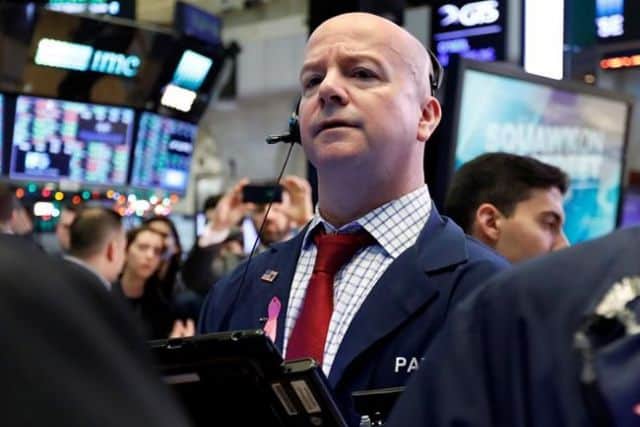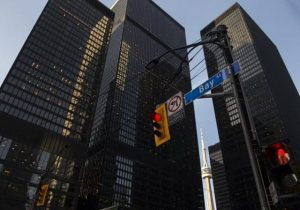
U.S. stocks wavered between small gains and losses Friday, struggling to maintain the momentum from a two-day winning streak following a week of volatile trading. Energy companies led a broad, late-afternoon slide. Smaller company stocks were outgaining the rest of the market.
The S&P 500 index fell 4 points, or 0.2 per cent, to 2,484 as of 3:29 p.m. Eastern Time. The Dow Jones Industrial Average dropped 93 points, or 0.4 per cent, to 23,045. The Nasdaq added 7 points, or 0.1 per cent, to 6,586. The Russell 2000 index of smaller-company stocks rose 10 points, or 0.8 per cent, 1,341.
On Thursday the Dow erased a 600-point loss and finished with a gain of 260 points. The swing was indicative of the volatility that has gripped the stock market throughout December. Friday has seen its own fluctuations, though less dramatic.
“It seems like convulsions in either direction have been the real norm for much of December and that’s certainly been the case this week,” said Eric Wiegand senior portfolio manager for Private Wealth Management at U.S. Bank. “The initial push higher and then seeing it subside a little bit is perhaps getting back to a little bit more of a normal environment, reflecting the reality that we have still a number of issues overhanging the market.”
Volatility has been the norm in December as investors have grown worried that the testy U.S.-China trade dispute and higher interest rates would slow the economy, hurting corporate profits. The Dow has dropped 2 per cent or more in six trading sessions and had a 5 per cent gain on Wednesday. The market’s sharp downturn since October has intensified this month, erasing all its 2018 gains and nudging the S&P 500 closer to its worst year since 2008. Even with the two-day winning streak heading into Friday, the Dow, S&P 500 and Nasdaq are all down more than 9 per cent for the month and stocks are on track for their worst December since 1931.
“The market is substantially cheaper than it was going into the fourth quarter, and we believe quite a bit of the price action we saw in the fourth quarter was more indicative of a panic and a recession,” said Janet Johnston, portfolio manager at TrimTabs Asset Management. “And that sets up a good buying opportunity.”
Oil prices recovered after wavering in midmorning trading. Benchmark U.S. crude rose 1.6 per cent to settle at $45.33 a barrel in New York. Brent crude, used to price international oils, inched up 0.1 per cent to close at $52.20 a barrel in London.
Despite the rise in oil prices, energy sector stocks declined. Cabot Oil & Gas slid 3.7 per cent to $22.88, while Hess lost 2.1 per cent to $40.66.
Bonds prices rose early then levelled off. The yield on the 10-year Treasury was flat at 2.74 per cent.


